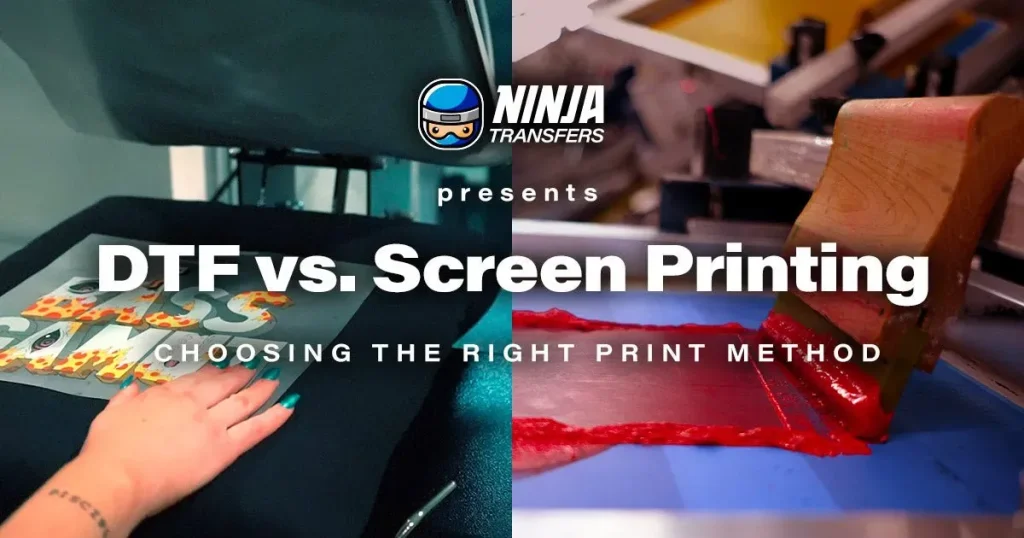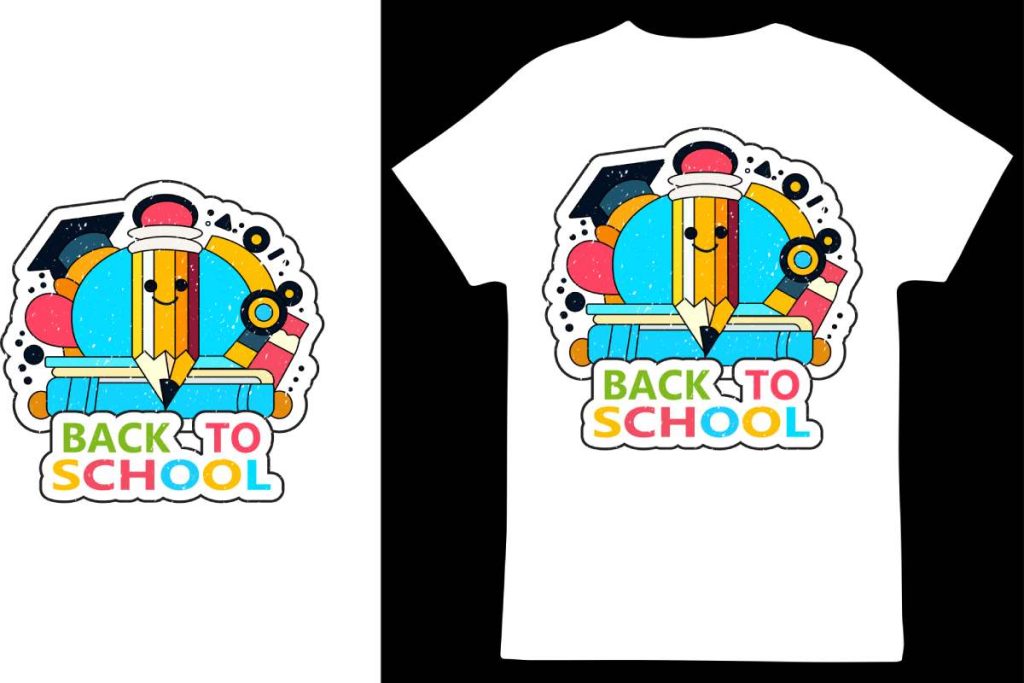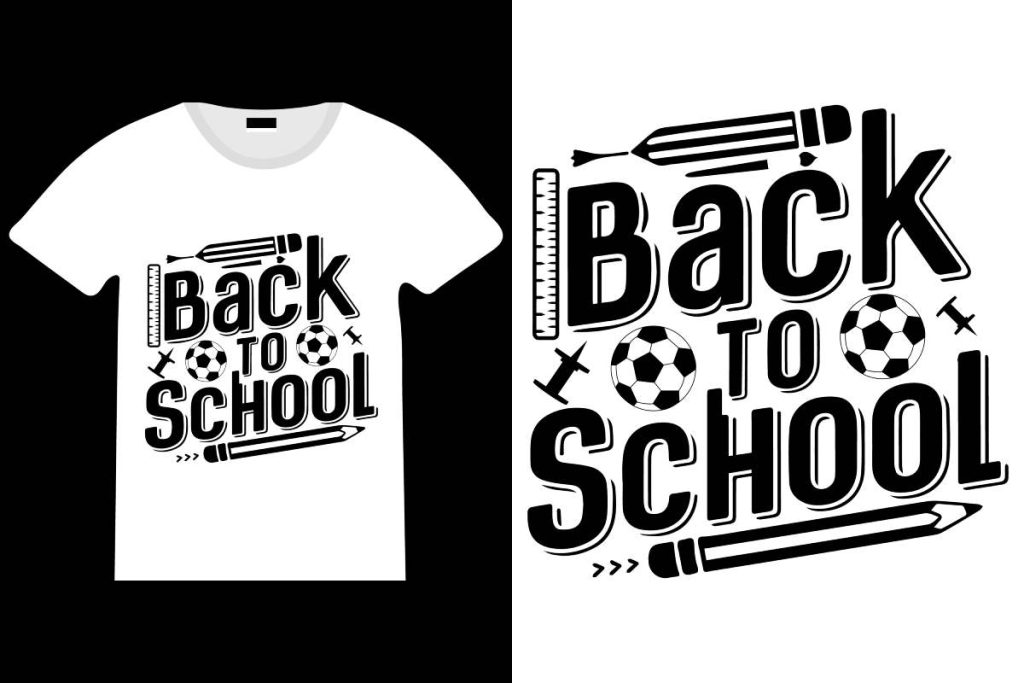When it comes to customizing apparel, the debate between DTF transfers vs. screen printing has become increasingly relevant. Both printing processes offer unique advantages and challenges, making it essential to explore their differences before selecting the best printing method for your projects. DTF printing benefits include the ability to create intricate designs and vibrant colors, while screen printing techniques are recognized for their efficiency in bulk orders. Understanding these apparel printing options can significantly impact your final product’s quality and cost. In this article, we’ll delve into a comprehensive transfer printing comparison to help you choose the right technique for your needs.
In the world of custom apparel, the choice between film transfers and traditional stenciling methods often arises. These printing techniques, commonly known as DTF and screen printing, respectively, carry distinct advantages and limitations that cater to different creative needs. While DTF allows for detailed photographic designs and flexibility with fabric types, screen printing shines with its ability to produce vibrant and durable graphics, especially for larger runs. Analyzing these popular printing processes can provide insights that guide your decisions in garment customization. Join us as we explore the intricacies of these beloved printing styles and what makes each uniquely suited to various project demands.
Understanding DTF Transfer Printing Techniques
DTF transfer printing is a revolutionary method that allows for exceptional detail and color accuracy on fabric. This process begins with the use of a specialized printer that jets ink onto a film, creating a stunning representation of the design. The key to DTF’s success lies in its unique adhesive powder, which ensures the ink adheres properly to the fabric once heat is applied. This technique not only accommodates complex designs, but it also enables smooth gradients and vivid colors, making it a prime choice for fashion brands looking to make a bold statement.
Additionally, DTF transfers are incredibly versatile, allowing for application on a variety of fabrics, from cotton to polyester. This adaptability is a significant advantage for businesses that offer a wide range of products. Unlike traditional methods, DTF transfers can handle dark garments seamlessly, ensuring that designs remain vibrant no matter the fabric’s color. This gives apparel printing options a major boost, as designers can experiment with contrasting hues that were previously challenging for other printing methods.
Screen Printing Advantages for Bulk Orders
Screen printing is celebrated as one of the most efficient methods for producing high volumes of apparel. By creating individual stencils for each color in the design, screen printing allows for layering of ink, resulting in striking visuals that are perfect for promotional or branded clothing. As the quantity of shirts increases, the unit cost dramatically decreases, making screen printing a cost-effective option for businesses needing bulk orders.
This method thrives on producing bold designs where fewer colors are used. The longevity of screen-printed garments is also noteworthy; when properly cured, the ink bonds firmly with the fabric, ensuring that colors remain vibrant through multiple washes. This advantage positions screen printing as a reliable choice for businesses seeking to make a lasting impression while managing production costs efficiently.
DTF Transfers vs. Screen Printing: A Comprehensive Comparison
When debating DTF transfers vs. screen printing, it’s essential to analyze various factors such as design complexity, color accuracy, and overall cost-effectiveness. DTF transfers shine in their ability to reproduce intricate designs with a full spectrum of colors, thanks to their digital printing process. They are ideal for smaller runs or unique items but may carry a higher cost per piece for larger orders.
In contrast, screen printing becomes increasingly cost-efficient as the volume rises, making it the best printing method for large scale production. However, its limitations in color depth and detail may make it less suitable for detailed artwork compared to the superior capabilities of DTF printing. Therefore, when selecting between these two techniques, consider the type of project, the design’s requirements, and your budget to make an informed choice.
Exploring the Benefits of DTF Printing
DTF printing has garnered attention in the custom apparel industry for its standout benefits, primarily its versatility and vibrant output. Unlike traditional methods, DTF allows for high-quality prints on a variety of materials, including those traditionally pricy to print on, such as synthetic fabrics. Businesses can enjoy endless design possibilities without sacrificing quality or durability.
Furthermore, DTF transfers do not require limitations on color use, allowing graphic designers to work freely without worrying about the constraints of screens or stencils. This flexibility makes DTF printing an attractive option for fashion-forward brands or promotional campaigns that require intricate, eye-catching designs that won’t fade or deteriorate easily with the passage of time.
Evaluating Apparel Printing Options for Small Businesses
For small businesses entering the custom apparel market, choosing the right printing method can significantly impact both creativity and productivity. DTF printing offers a fantastic opportunity for startups due to lower initial setup costs and the ability to create high-quality, low-quantity orders without overwhelming investment. Entrepreneurs can offer unique designs that speak to their brand identity, while DTF’s efficiency means they can manage their inventory better.
On the other hand, for those looking to produce items like uniforms or promotional merchandise in larger quantities, screen printing remains a popular choice. Its established reputation for fast turnaround and affordability at larger runs means that small businesses can keep costs low while maintaining quality. Choosing between these apparel printing options requires balancing creative goals with practical limitations, which is vital for sustained growth.
Comparative Insights on Transfer Printing Techniques
Transfer printing techniques, including DTF and screen printing, each come with their unique advantages and limitations. While DTF printing is phenomenal for detailed and multi-colored designs, it requires specific equipment and may not be as economically viable for larger runs when compared to screen printing. Contrarily, screen printing might seem antiquated, but it’s known for its ability to create bold and large designs that resonate well in traditional markets.
As the technology continues to evolve, understanding the nuances of each method can enhance decision-making for businesses. The choice ultimately lies in the project requirements—considering factors like design complexity, the fabric type, color fidelity, and volume will lead to the best fit between these transfer printing techniques.
Frequently Asked Questions
What are the main differences between DTF transfers vs. screen printing?
DTF transfers vs. screen printing differ primarily in their application techniques. DTF transfers utilize a film to transfer designs onto fabric using heat, allowing for photorealistic images, while screen printing uses stencils to apply ink directly onto the material, making it ideal for bold designs with fewer colors.
What are the benefits of using DTF printing compared to screen printing?
DTF printing benefits include the ability to print on various fabric types and colors, even dark materials, plus the flexibility and softness of the prints. In contrast, screen printing is more efficient for bulk orders and produces vibrant, long-lasting designs.
Which printing method is best for intricate designs: DTF transfers or screen printing?
For intricate designs featuring gradients and a wide color palette, DTF transfers are often the superior choice. Screen printing excels with bold graphics and fewer colors, making the selection of the best printing method dependent on the design complexity.
How does the cost of DTF transfers compare to screen printing in bulk orders?
In bulk orders, screen printing typically offers a lower unit cost due to its efficient production process. However, DTF transfers can be more cost-effective for smaller batches or custom designs, offering flexibility without sacrificing quality.
Are DTF transfers suitable for all types of apparel compared to screen printing?
Yes, DTF transfers are highly versatile and can be applied to various fabrics, including cotton and polyester, whereas screen printing is better suited for specific fabrics and color limitations. This adaptability makes DTF a favorable option for diverse apparel printing needs.
Can I get vibrant colors with screen printing like I would with DTF transfers?
While screen printing can achieve vibrant colors, especially with solid inks, DTF transfers can provide more vivid and photorealistic designs due to their ability to encapsulate a broader spectrum of colors. The choice between DTF transfers vs. screen printing ultimately depends on the desired outcome.
| Feature | DTF Transfers | Screen Printing |
|---|---|---|
| Process | Printing on special film and heat pressing onto fabric. | Using stencils to apply ink directly onto fabric. |
| Best for | Intricate designs with multiple colors. | Bold designs with fewer colors. |
| Fabric Compatibility | Works on various fabrics, including cotton and polyester. | Best suited for cotton and some blends. |
| Advantages | Vibrant colors and soft finish, versatile. | Cost-effective for bulk printing, vibrant colors. |
| Durability | Soft and flexible, less prone to cracking. | Highly durable when cured properly. |
Summary
DTF transfers vs. screen printing can be a critical decision for apparel customization. While DTF transfers offer versatility and the ability to create detailed designs on various fabric types, screen printing excels in producing vibrant, bulk orders efficiently. Understanding these processes allows businesses and designers to choose the right method that aligns with their project needs, ensuring high-quality results.



